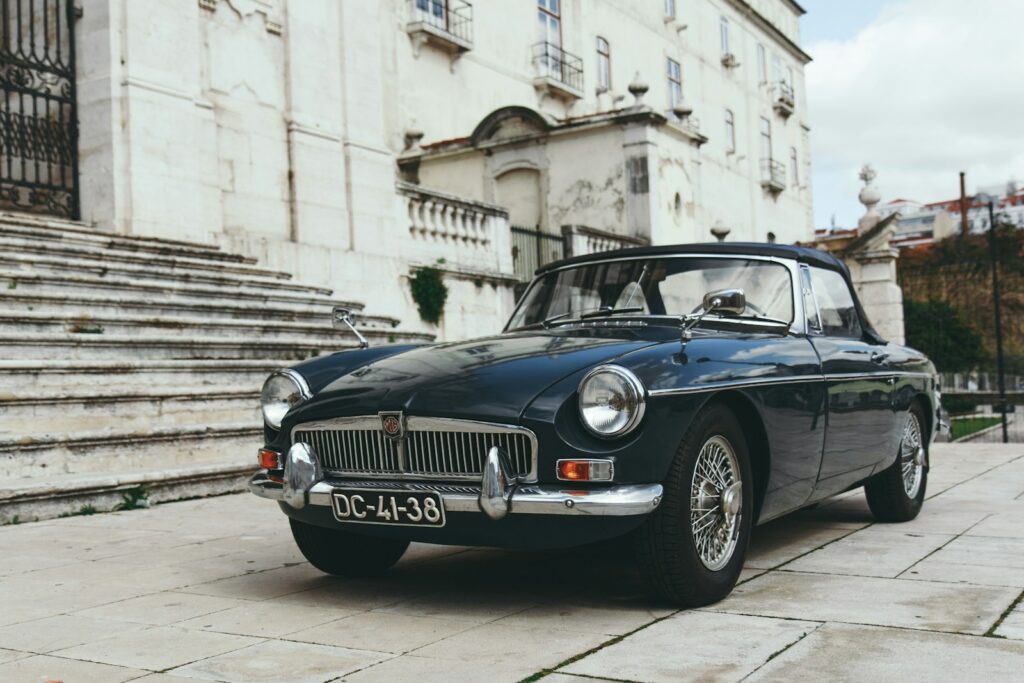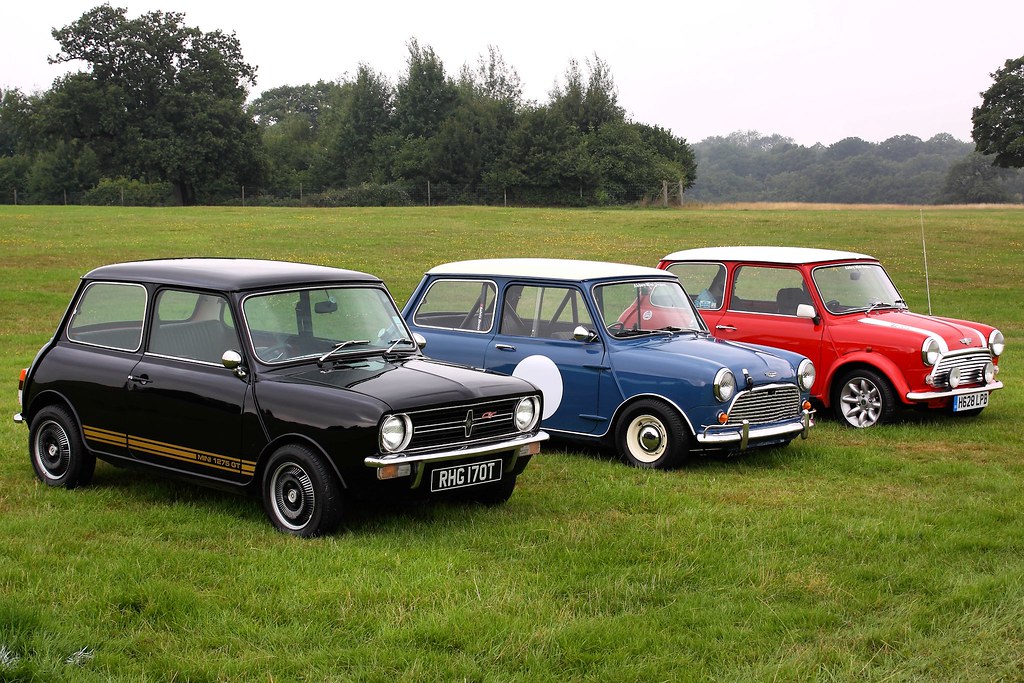
Classic cars have long held a unique allure, captivating enthusiasts not just with their stunning aesthetics and rich history, but also as increasingly savvy investments. These vintage beauties, once perhaps seen merely as passion projects, have transformed into significant assets within the collector’s market. In recent years, the trajectory of some classic car values has been nothing short of astonishing, drawing considerable attention from both seasoned collectors and new investors eager to understand this powerful trend.
Indeed, the financial performance of classic cars has outpaced traditional investments like gold or bonds for decades. The overall growth index across the entire classic car market has seen an astounding increase of almost 200 percent in the last few years alone. This remarkable appreciation often leads one to ponder the missed opportunities of yesteryear, perhaps lamenting the sale of a high school ride like an old Corvette that could now be worth a fortune.
While a general upward trend affects nearly all vintage automobiles, a select group of “true champions” truly defines this phenomenon. These are the rare and iconic vehicles whose values haven’t just risen, but have “skyrocketed,” some commanding prices hundreds of times their original cost. What makes this even more compelling is that some of these models, originally quite ordinary, now command six-figure prices. This article will delve into the market dynamics driving this incredible surge and spotlight 14 of these legendary cars, revealing the magic of the collector’s market.
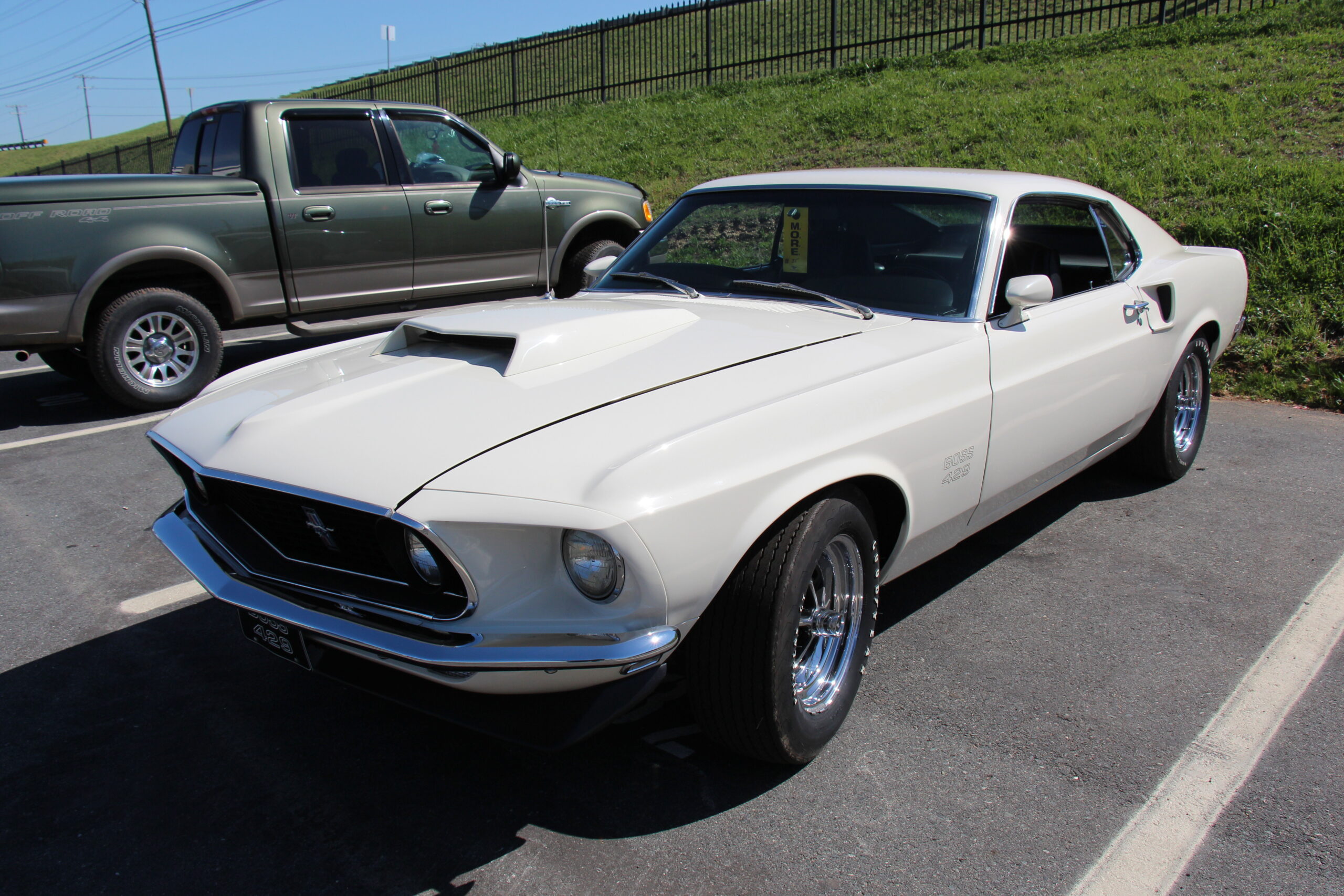
1. **Ford Mustang Boss 429**The Ford Mustang Boss 429 stands as an undisputed titan in the realm of American muscle cars, a beast that truly roars with an unparalleled blend of elegance and raw power. This wasn’t merely a car built for cruising; it was engineered for performance that leaves a lasting, indelible impression on anyone fortunate enough to witness or experience it. Its very existence was a statement, born from Ford’s need to homologate its new 429 cubic-inch V8 engine for NASCAR racing, ensuring a legacy woven into motorsport history.
Beneath its sculpted hood lay a massive engine, a marvel of engineering that provided its legendary grunt. Coupled with an amazing design that perfectly encapsulated the aggressive yet sophisticated aesthetic of the muscle car era, the Boss 429 quickly became and remains a collector’s dream. Imagine the thrill of cruising down an open road, the wind in your hair, and the powerful, guttural growl of that monumental engine echoing in your ears – it’s an experience that transcends mere transportation, becoming a visceral connection to a bygone era of automotive excellence.
It is no wonder then that this particular classic has seen a significant surge in value within the collector market. Its limited production numbers, combined with its formidable performance credentials and its undeniable role in American automotive folklore, have cemented its status. The Boss 429 encapsulates the very essence of what a true muscle car should be: uncompromising power, head-turning style, and an unshakeable presence that commands respect. Its upward financial trajectory is a direct reflection of its enduring appeal and historical importance.
Car Model Information: 2025 Honda Civic Sport
Caption: 1969 Boss 429
Layout: Longitudinal engine
Manufacturer: Ford Motor Company
Production: 1969–1970
Name: Mustang Boss 429
Class: Muscle car
BodyStyle: coupé
Assembly: Dearborn, Michigan
Height: 50.4 in
Abbr: on
Length: 187.4 in
Width: 71.7 in
Engine: 429 cuin
Transmission: manual transmission
Weight: 3870 lb
Categories: All Wikipedia articles needing clarification, All articles needing additional references, All articles with unsourced statements, Articles needing additional references from August 2008, Articles with short description
Summary: The Boss 429 Mustang is a high-performance Ford Mustang variant that was offered by Ford in 1969 and 1970. It featured a race-designed 429 cu in (7.0 L) semi-hemispherical head version of the big block 429 V8, offered in the car both to homologate the engine for NASCAR racing and to offer a bigger, more-powerful version of the popular small block 5 L Boss 302 Mustang.
The price of all the performance and modifications was steep: at nearly $5,000 a Boss 429 was roughly twice the price of the base model inline-6 Mustang. A total of 1,359 Boss 429s were produced.
Get more information about: Boss 429 Mustang
Buying a high-performing used car >>>
Brand: Ford Model: Mustang Boss 429
Price: $26,923 Mileage: 1,460 mi.
Read more about: 12 Legendary Automotive Rivalries That Revolutionized the Roads and Fueled Innovation
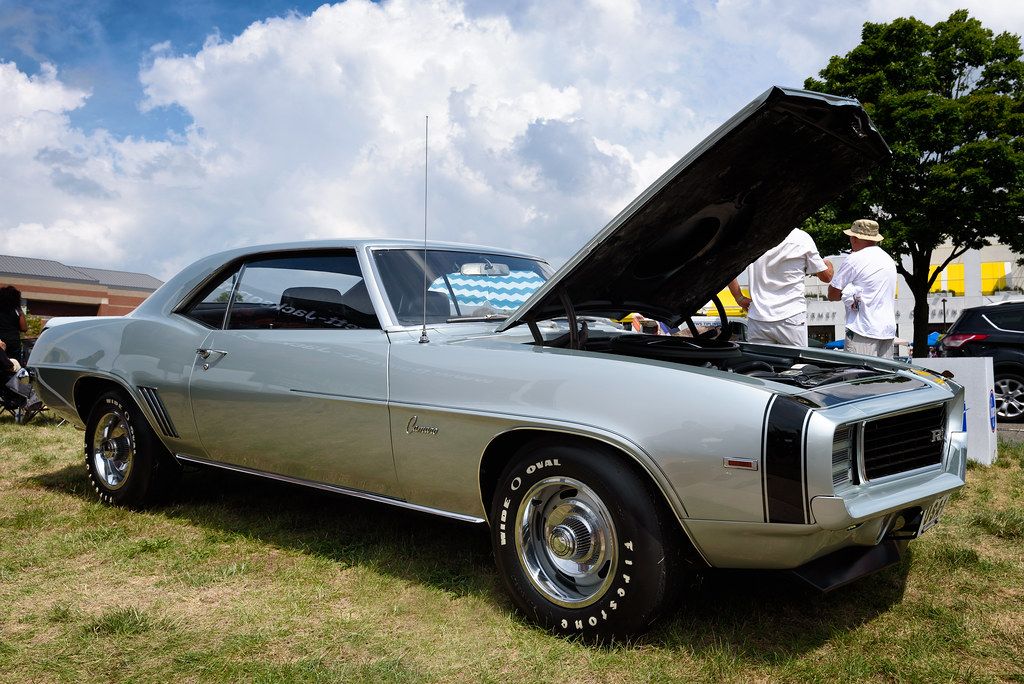
2. **Chevrolet Camaro ZL1**The Chevrolet Camaro ZL1 distinguishes itself with an aggressive styling that is perfectly matched by its formidable performance capabilities. This is not a vehicle designed for the meek or the faint-hearted; it is, unequivocally, a bold statement on wheels, asserting its dominance on any road it graces. Its powerful engine, a specially built all-aluminum 427 cubic-inch V8, was a rare and expensive option, making these models exceptionally sought after even in their prime.
Beyond the sheer power, the Camaro ZL1 offers an exhilarating driving experience characterized by its sharp handling and responsive demeanor. It wasn’t just about straight-line speed; it was about precision and control, allowing drivers to truly connect with the machine. The ZL1 was crafted for making an entrance, for turning every head, and for leaving an unforgettable mark wherever it appeared, embodying the ultimate expression of Camaro performance.
In the contemporary classic car market, specifically as of 2025 according to the context, the value of the Chevrolet Camaro ZL1 has soared. This dramatic increase is largely driven by the fervent desire of collectors to own a significant piece of automotive history – one that embodies raw power, uncompromising style, and a championship pedigree. Its scarcity, born from its specialized production and high cost when new, further amplifies its desirability and investment potential, solidifying its place among the elite muscle car collectibles.
Car Model Information: 2018 Chevrolet Camaro 1LS
Name: Chevrolet Camaro
Manufacturer: Chevrolet
Production: 1966–2002,2009–2023
ModelYears: 1967–2002,2010–2024
Class: Pony car
BodyStyle: coupe,convertible
Platform: GM F platform,GM Zeta platform,GM Alpha platform
Layout: Front-engine, rear-wheel-drive layout
Categories: 1970s cars, 1980s cars, 1990s cars, 2+2 coupés, 2000s cars
Summary: The Chevrolet Camaro is a mid-size American automobile manufactured by Chevrolet, classified as a pony car. It first went on sale on September 29, 1966, for the 1967 model year and was designed to compete with the Ford Mustang. The Camaro shared its platform and major components with the Firebird, produced by General Motors’ Pontiac division that was also introduced for the 1967 model year.
Four distinct generations of the Camaro were developed before production ended in 2002. The nameplate was revived on a concept car that evolved into the fifth-generation Camaro; production started on March 16, 2009.
Production of the sixth generation of the Camaro ended in December 2023, for the 2024 model year.
Get more information about: Chevrolet Camaro
Buying a high-performing used car >>>
Brand: Chevrolet Model: Camaro
Price: $18,785 Mileage: 69,196 mi.
Read more about: Rev Up Your Engines: 12 Million-Dollar American Muscle Cars Celebrities Are Obsessed With
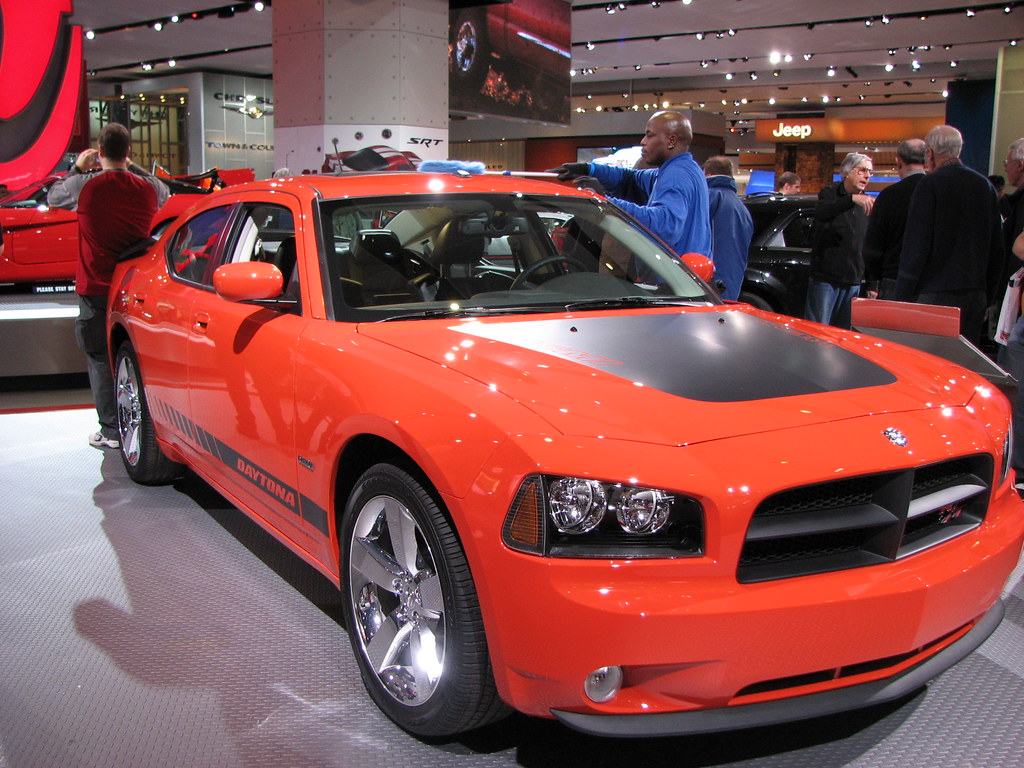
3. **Dodge Charger Daytona**The Dodge Charger Daytona stands as one of the most iconic and visually unmistakable muscle cars ever conceived. Its distinctive features – the towering rear wing and the long, aggressive nose cone – weren’t just for show; they were meticulously designed for superior aerodynamics and blistering speed. These groundbreaking modifications were specifically implemented to help the Daytona dominate NASCAR circuits in the late 1960s, a mission it famously accomplished by being the first car to break the 200 mph barrier in a NASCAR race.
Today, this rare beast, especially when equipped with its legendary 426 HEMI V8 engine, has evolved into an extraordinarily sought-after collector’s item. The historical context of its racing success, combined with its visually striking and unconventional design, makes it instantly recognizable and deeply desirable. Its rarity further fuels this demand, as only a limited number were produced to meet NASCAR homologation rules, ensuring its exclusivity in the market.
The values for the Dodge Charger Daytona have been “skyrocketing,” a clear testament to its enduring legacy and growing appreciation among enthusiasts. The Daytona is far more than just another muscle car; it is a profound statement on wheels, an embodiment of engineering prowess and audacious design from an era defined by horsepower. Its continued ascent in value is directly linked to the surging demand for classic American performance vehicles, making it a true blue-chip investment in the automotive world.
Car Model Information: 2023 Subaru Forester Limited
Name: Dodge Charger Daytona
Caption: 1969 Dodge Charger Daytona
Manufacturer: Dodge
Production: 1969–1970,2006–2009,2013,2017–2023
Class: Muscle car
Layout: FR layout
Categories: 1960s cars, 1970s cars, 2000s cars, All articles needing additional references, All articles with unsourced statements
Summary: Dodge produced three separate models with the name Dodge Charger Daytona, all of which were modified Dodge Chargers. The name was taken from Daytona Beach, Florida, which was an early center for auto racing and still hosts the Daytona 500, NASCAR’s premier event. The original Dodge Charger Daytona was designed to beat the competition in NASCAR racing. It was the first NASCAR vehicle to reach 200 miles per hour, which was a major milestone at the time.
Get more information about: Dodge Charger Daytona
Buying a high-performing used car >>>
Brand: Dodge Model: Charger Daytona
Price: $32,025 Mileage: 17,380 mi.
Read more about: Why Rappers Are Shifting Gears: The Undeniable Allure of Ultra-Rare Japanese Tuner Cars Over European Supercars
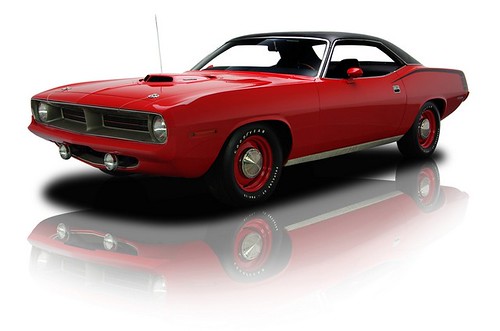
4. **Plymouth Hemi Cuda**The Plymouth Hemi Cuda is firmly entrenched in the pantheon of muscle car legends, celebrated for its raw, untamed power and uncompromising, brutal performance. At its heart lay the formidable 426 HEMI engine, a powerplant so potent that it could effortlessly dominate both the burgeoning street scene and the fiercely competitive drag strips of its era. This engine, notorious for its high-performance output, defined an entire generation of American automotive might and became synonymous with ultimate power.
What significantly contributes to the Hemi Cuda’s extraordinary status and escalating value is its extremely limited production. Only a handful of these vehicles were ever equipped with the fabled 426 HEMI engine, making the Hemi Cuda an exceptionally rare find and, consequently, a highly coveted prize for discerning collectors worldwide. This scarcity ensures that each surviving example is a treasure, a tangible link to a pivotal moment in automotive history when horsepower reigned supreme.
As the values of muscle cars continue their upward trajectory in 2025, the Hemi Cuda stands out, demonstrating a persistent and significant climb in worth. This sustained appreciation is attributed to a potent combination of its unparalleled performance capabilities, its inherent rarity, and its unquestionable status as one of the purest and most unadulterated muscle cars ever manufactured. It represents more than just a car; it is a powerful icon, a symbol of American engineering prowess and an investment that continually proves its worth.
Car Model Information: 2023 Subaru Forester Limited
Caption: 1970 Hardtop Coupe
Name: Plymouth Barracuda
Manufacturer: Plymouth (automobile)
Production: 1964–1974
Assembly: Fenton, Missouri,Hamtramck, Michigan,Maywood, California,Windsor, Ontario
Layout: Front-engine, rear-wheel drive layout
Class: Pony car
Categories: 1970s cars, All articles with dead external links, All articles with unsourced statements, Articles with dead external links from February 2018, Articles with dead external links from January 2022
Summary: The Plymouth Barracuda is a two-door pony car that was manufactured by Chrysler Corporation from 1964 through 1974 model years.
The first-generation Barracuda was based on the Chrysler A-body and was offered from 1964 until 1966. A two-door hardtop (no B-pillar) fastback design, it shared a great majority of parts and bodywork with the Plymouth Valiant, except for the distinctive wraparound rear glass.
The second-generation Barracuda, though still Valiant-based, was heavily redesigned. Built from 1967 through 1969, it was available as a two-door in fastback, notchback, and convertible versions.
The third generation, offered from 1970 until 1974, was based on the Chrysler E-body, exclusive to it, and the slightly larger Dodge Challenger. A completely new design, the two-door Barracuda was available in hardtop and convertible body styles.
Get more information about: Plymouth Barracuda
Buying a high-performing used car >>>
Brand: Plymouth Model: Hemi Cuda
Price: $32,025 Mileage: 17,380 mi.
Read more about: 14 Celebrity-Owned Cars That Were Wrecked in Under 24 Hours of Ownership
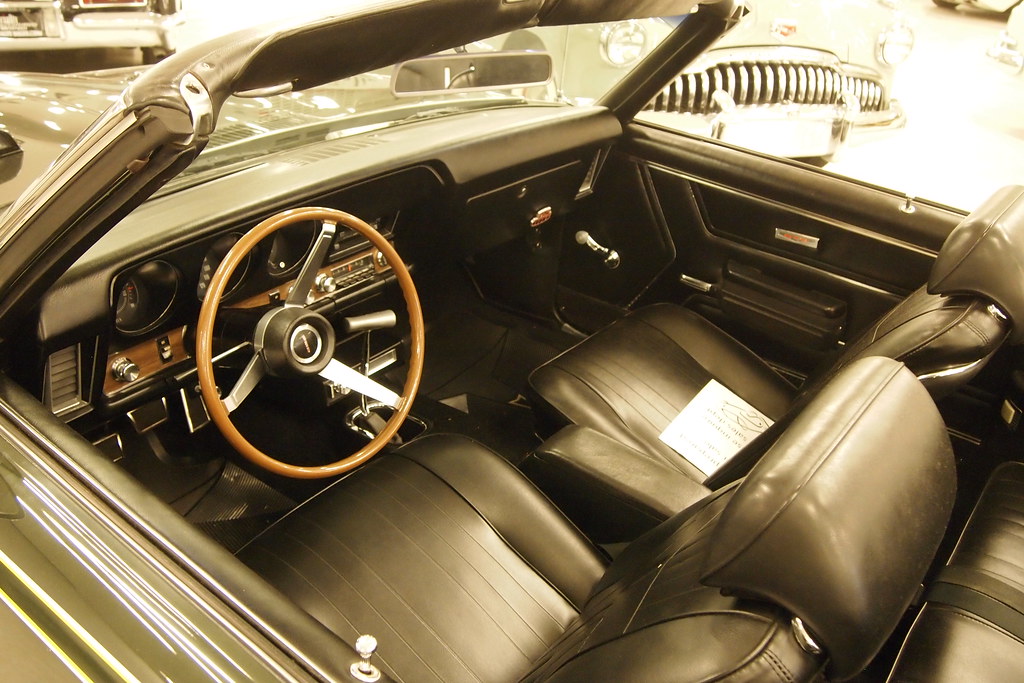
5. **Pontiac GTO Judge**The Pontiac GTO Judge is a muscle car that is as audacious and commanding as its very name suggests, making an undeniable impact wherever it appears. With its striking array of vibrant colors, often exemplified by the iconic “Orbit Orange,” and its distinctive “The Judge” decals and graphics, it’s a car that was purpose-built to demand and receive attention. This bold aesthetic was an immediate indicator of the formidable power lying beneath its spirited exterior.
Underneath the hood, the GTO Judge delivered a serious punch, equipped with a powerful engine, most notably the Ram Air III or the even more potent Ram Air IV. These engines provided a driving experience that was nothing short of thrilling, characterized by impressive acceleration and a distinctive, rumbling exhaust note that signaled its performance pedigree. The Judge wasn’t just fast; it was flamboyant, reflecting the exuberance and confidence of the late 1960s automotive culture.
In the collector market, particularly looking at 2025 trends, its value has “skyrocketed” as enthusiasts and collectors alike have eagerly sought to capture the essence of this quintessential American muscle machine. This car transcends mere transportation; it is a vivid statement of power and definitive style, an enduring legend in the dynamic and highly competitive world of muscle cars. Its collectibility is further cemented by its relatively limited production and its unmistakable cultural footprint.
Car Model Information: 2025 Honda Civic Sport
Name: Pontiac GTO
Caption: 2005 Pontiac GTO
Manufacturer: Pontiac (automobile),Holden
Class: Mid-size car,Compact car,Mid-size car
Production: 1963–1974,2003–2006
Predecessor: Pontiac Tempest
Layout: Front-engine, rear-wheel-drive layout
ModelYears: 1964-1974 2004-2006
Categories: 1970s cars, 2000s cars, All articles with unsourced statements, Articles with short description, Articles with unsourced statements from October 2008
Summary: The Pontiac GTO is a front-engine, rear-drive, two-door, and four-passenger automobile manufactured and marketed by the Pontiac division of General Motors over four generations from 1963 until 1974 in the United States — with a fifth generation made by GM’s Australian subsidiary, Holden, for the 2004 through 2006 model years.
The first generation of the GTO is credited with popularizing the muscle car market segment in the 1960s. Some consider the Pontiac GTO to have started the trend with all four domestic automakers offering a variety of competing models.
For the 1964 and 1965 model years, the GTO was an optional package on the intermediate-sized Pontiac LeMans. The 1964 GTO vehicle identification number (VIN) started with 22, while the 1965 GTO VIN began with 237. The GTO was designated as a separate Pontiac model from 1966 through 1971 (VIN 242…). It became an optional package again for the 1972 and 1973 intermediate LeMans. For 1974, the GTO was an optional trim package on the compact-sized Ventura.
The GTO model was revived for the 2004 through 2006 model years as a captive import for Pontiac, a left-hand drive version of the Holden Monaro, itself a coupé variant of the Holden Commodore.
Get more information about: Pontiac GTO
Buying a high-performing used car >>>
Brand: Pontiac Model: GTO Judge
Price: $26,923 Mileage: 1,460 mi.
Read more about: Rev Up Your Engines: 12 Million-Dollar American Muscle Cars Celebrities Are Obsessed With
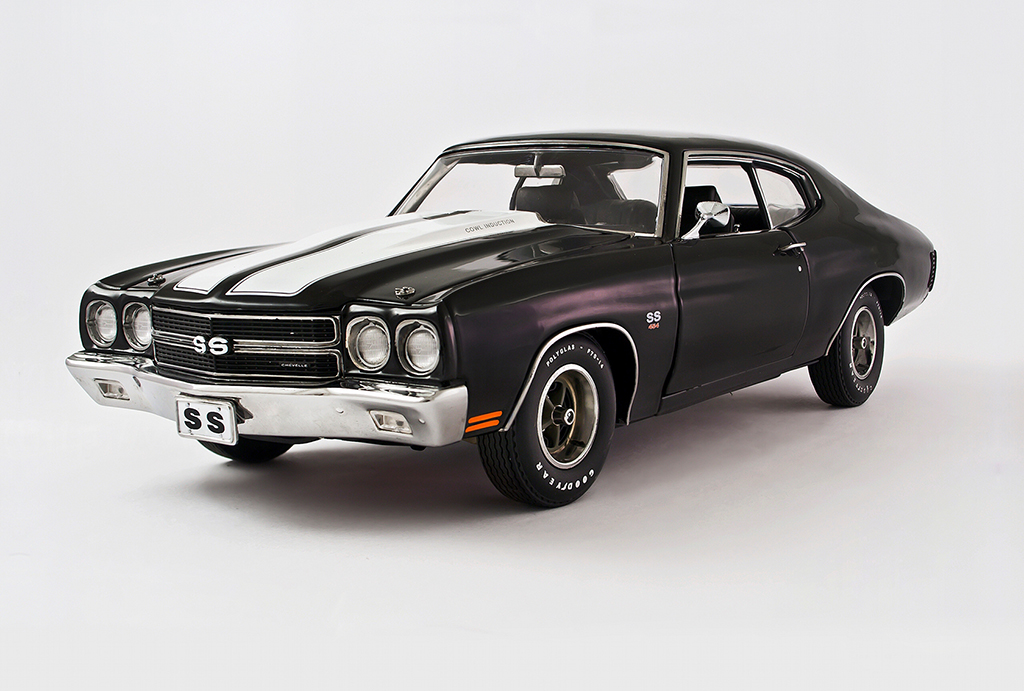
6. **Chevrolet Chevelle SS 454**The Chevrolet Chevelle SS 454 stands as the very epitome of muscle, representing the pinnacle of raw power and commanding presence during the golden age of American performance cars. It was equipped with a monstrous big-block engine, the legendary LS6 454 cubic-inch V8, which cemented its reputation for brute force and uncompromising performance. This car wasn’t just built; it was sculpted to embody strength and undeniable style, turning every single head as its formidable presence rolled by.
Driving this magnificent beast is described as an experience unlike any other, characterized by its deep, rumbling engine note and an unexpected yet remarkably smooth ride for such a high-performance machine. The Chevelle SS 454 perfectly balanced incredible straight-line speed with a level of refinement that made it both a terror on the drag strip and a surprisingly comfortable cruiser. It was, and remains, a pure expression of automotive artistry that genuinely captivates the soul of anyone who appreciates mechanical excellence.
In the year 2025, the value of the Chevrolet Chevelle SS 454 continued its impressive climb. This appreciation stems from the widespread recognition among collectors and enthusiasts of its profound significance in the lineage of muscle cars. Its status as one of the most powerful production cars of its era, combined with its iconic design and enduring popularity, ensures its position as a highly desirable and increasingly valuable asset in the competitive classic car market.
Car Model Information: 2025 Honda Civic Sport
Name: Chevrolet Chevelle
Caption: 1970 Chevrolet Chevelle SS 396 Sport Coupe
Manufacturer: Chevrolet
Production: 1963–1977
ModelYears: 1964–1977
Class: Mid-size
Platform: GM A platform (RWD)
Layout: FR layout
Successor: Chevrolet Malibu
Categories: 1970s cars, All articles needing additional references, All articles that may contain original research, All articles with specifically marked weasel-worded phrases, All articles with unsourced statements
Summary: The Chevrolet Chevelle is a mid-sized automobile that was produced by the Chevrolet division of General Motors (GM) in three generations for the 1964 to 1977 model years. Part of the GM A-body platform, the Chevelle was one of Chevrolet’s most successful nameplates. Body styles included coupes, sedans, convertibles, and station wagons. The “Super Sport” versions were produced through the 1973 model year and Lagunas from 1973 through to 1976.
After a four-year absence, the El Camino was reintroduced as part of the new Chevelle lineup in 1964.
From 1964 to 1969, GM of Canada sold a modified version of the Chevelle that included a Pontiac-style grille, and a LeMans instrument panel, marketed as the Beaumont.
The Malibu was the top-of-the-line model to 1972, and completely replaced the Chevelle nameplate starting with the redesigned, and downsized 1978 model year.
Get more information about: Chevrolet Chevelle
Buying a high-performing used car >>>
Brand: Chevrolet Model: Chevelle SS 454
Price: $26,923 Mileage: 1,460 mi.
Read more about: The Road to Regret: 8 Sedans Owners Wish They Never Purchased
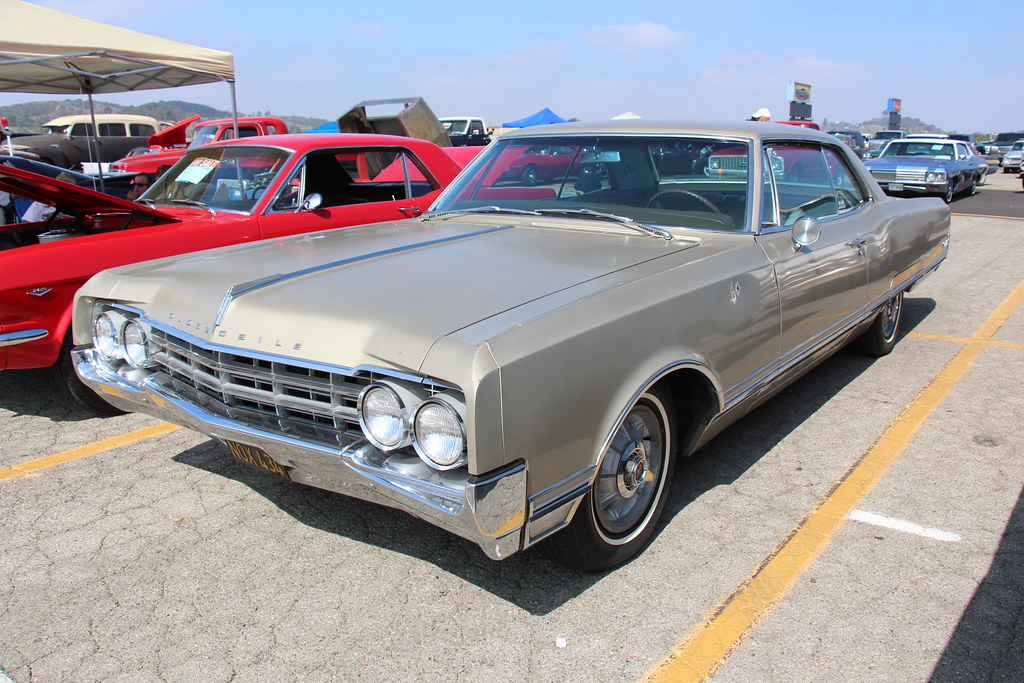
7. **Oldsmobile 442**The Oldsmobile 442 emerged as Oldsmobile’s emphatic response to the burgeoning muscle car movement, showcasing a blend of sophistication and brute force. This vehicle wasn’t simply an attempt to compete; it was a strong contender designed to hold its own against the toughest rivals. Equipped with a powerful V8 engine, a distinctive, throaty exhaust note, and a stunning, aggressive aesthetic, the 442 proved its mettle on both the bustling streets and the demanding drag strips of its time, leaving a significant mark on automotive history.
Over the decades, the Oldsmobile 442 has steadily transformed into a coveted collector’s dream, particularly the highly sought-after W30 models. These special versions, often identified by their distinctive force-air induction system and unique badging, represented the ultimate expression of the 442’s performance potential. Their rarity, coupled with their superior performance characteristics, has made them especially valuable within the classic car community, drawing significant attention from serious enthusiasts.
As muscle car values have soared across the board, the 442’s well-deserved reputation for both blistering performance and inherent rarity has effectively driven its price “into the stratosphere.” This makes it clear that if you are fortunate enough to own one of these magnificent machines today, you are undoubtedly “sitting on a highly prized classic.” Its unique position as a more refined, yet equally powerful, alternative to some of its rivals only adds to its distinct appeal and surging market value.
Moving beyond the formidable American muscle machines that have redefined the collector landscape, our journey into the world of skyrocketing classic car values continues by spotlighting another seven iconic models. These vehicles, hailing from diverse corners of the automotive world, share a common thread: they represent pinnacles of design, engineering, and cultural impact, making them exceptionally coveted assets. Their stories demonstrate that exceptional value is driven not just by raw power, but also by innovation, rarity, and an indelible mark on history, ensuring their enduring investment potential.
Car Model Information: 1969 Oldsmobile 442
Name: Oldsmobile 442
Manufacturer: Oldsmobile
ModelYears: 1964–1980,1985–1987,1990–1991
Class: Muscle car
Layout: FR layout
Caption: 1971 Oldsmobile 442
Categories: 1960s cars, 1970s cars, 1980s cars, All articles with unsourced statements, Articles with short description
Summary: The Oldsmobile 4-4-2 is a muscle car produced by Oldsmobile between the 1964 and 1987 model years. Introduced as an option package for US-sold F-85 and Cutlass models, it became a model in its own right from 1968 to 1971, spawned the Hurst/Olds in 1968, then reverted to an option through the mid-1970s. The name was revived in the 1980s on the rear-wheel drive Cutlass Supreme and early 1990s as an option package for the new front-wheel drive Cutlass Calais.
The “4-4-2” name (pronounced “Four-four-two”) derives from the original car’s four-barrel carburetor, four-speed manual transmission, and dual exhausts. It was originally written “4-4-2” (with badging showing hyphens between the numerals), and remained hyphenated throughout Oldsmobile’s use of the designation. Beginning in 1965, the 4-4-2s standard transmission was a three-speed manual along with an optional two-speed automatic and four-speed manual, but were still badged as “4-4-2″s.
Because of this change, from 1965 on, according to Oldsmobile brochures and advertisements, the 4-4-2 designation referred to the 400 cubic inch engine, four-barrel carburetor, and dual exhausts. By 1968, badging was shortened to simply “442”, but Oldsmobile brochures and internal documents continued to use the “4-4-2” model designation.
Get more information about: Oldsmobile 442
Buying a high-performing used car >>>
Brand: Oldsmobile Model: 442
Price: $43,990 Mileage: 24,000 mi.
Read more about: Paul Newman’s Hidden Drive: Unpacking the Hollywood Icon’s Illustrious Racing Career and Unbroken Records on the Track
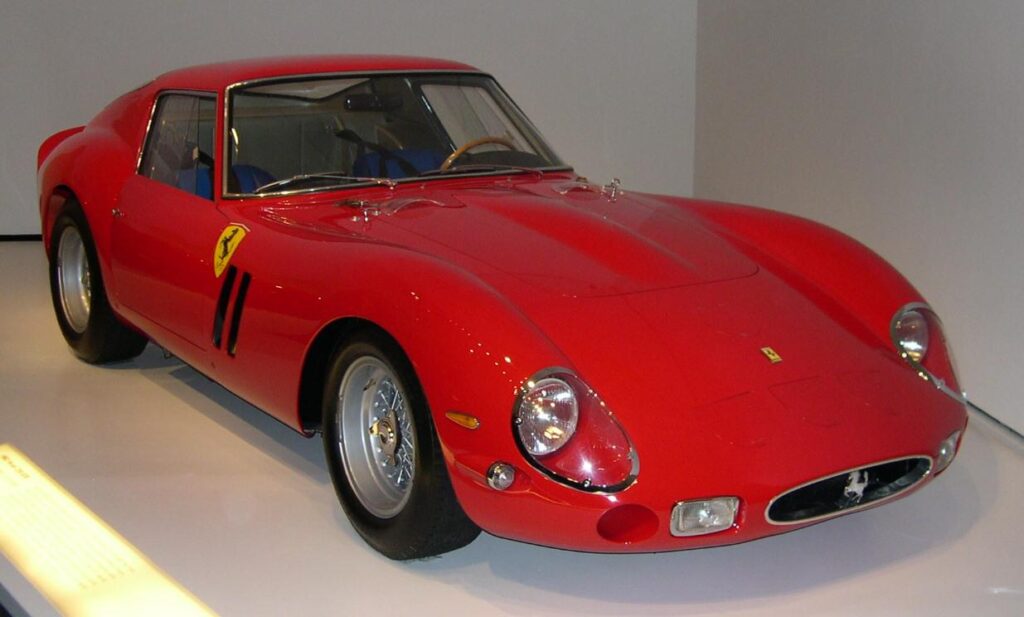
8. **Ferrari 250 GTO (1962-1964)**The Ferrari 250 GTO holds an almost mythical status in the automotive world, consistently ranking as one of the most valuable cars on the planet. Its legend isn’t merely built on its stunning aesthetics, which perfectly blend aggression with elegance, but also on its formidable track record. Born from Enzo Ferrari’s vision to dominate GT racing, the 250 GTO achieved unparalleled success, becoming a symbol of speed and exclusivity.
What truly sets the 250 GTO apart, and fuels its astronomical value, is its extreme rarity. Only 36 examples were ever produced between 1962 and 1964, making each surviving car a treasure beyond measure. This limited production was a direct consequence of homologation rules for the FIA’s Group 3 Grand Touring Car category, inadvertently creating one of the most sought-after collector’s items in history.
These cars were not just successful racers; they were meticulously crafted machines, embodying the pinnacle of Ferrari’s engineering prowess during a golden era. Collectors worldwide view them as the ultimate classic Ferraris, a tangible link to a period of unrivaled motorsport glory. Their values have, quite literally, reached “astronomical levels,” with some individual cars selling for “tens of millions of dollars” at auction, solidifying their status as blue-chip automotive investments.
Car Model Information: 2025 Honda Civic Sport
Name: Ferrari 250 GTO
Caption: 1963 Ferrari 250 GTO (chassis 4153GT)
Manufacturer: Ferrari
Production: 1962–1964,(36 produced)
Designer: Giotto Bizzarrini,Scaglietti
Class: Sports car
BodyStyle: berlinetta
Related: Ferrari 330#330 LMB,Ferrari P#250 LM
Layout: FR layout
Engine: 2,953 cc,Ferrari Colombo engine#250,Overhead camshaft#Single Overhead camshatf,Weber carburetor,Compression ratio
Powerout: 300 PS
Abbr: on
Order: flip @ 5500 rpm
Transmission: Manual transmission
Wheelbase: 2400 mm
Length: 4325 mm
Width: 1600 mm
Height: 1210 mm
Weight: convert
Predecessor: Ferrari 250 GT SWB
Successor: Ferrari 250 LM,Ferrari 288 GTO
Categories: All articles lacking reliable references, All articles needing additional references, All articles with bare URLs for citations, All articles with unsourced statements, Articles lacking reliable references from March 2022
Summary: The Ferrari 250 GTO is a grand tourer produced by Ferrari from 1962 to 1964 for homologation into the FIA’s Group 3 Grand Touring Car category. It was powered by Ferrari’s Tipo 168/62 Colombo V12 engine. The “250” in its name denotes the displacement in cubic centimeters of each of its cylinders; “GTO” stands for Gran Turismo Omologato, Italian for “Grand Touring Homologated”.
Just 36 of the 250 GTOs were manufactured between 1962 and 1964. This includes 33 cars with 1962–63 bodywork (Series I) and three with 1964 (Series II) bodywork similar to the Ferrari 250 LM. Four of the older 1962–1963 (Series I) cars were updated in 1964 with Series II bodies.
When new, the 250 GTO cost $18,000 in the United States, with buyers personally approved by Enzo Ferrari and his dealer for North America, Luigi Chinetti. This model has since become highly desired by automobile collectors and sales have repeatedly set price records. The current record for world’s most expensive Ferrari was set in June 2018 when a 1963 250 GTO (chassis 4153GT) was sold in a private sale for $70 million.
In 2004, Sports Car International placed the 250 GTO eighth on their list of Top Sports Cars of the 1960s, and nominated it the top sports car of all time. Similarly, Motor Trend Classic placed the 250 GTO first on a list of the “Greatest Ferraris of All Time”. Popular Mechanics named it the “Hottest Car of All Time”.
Get more information about: Ferrari 250 GTO
Buying a high-performing used car >>>
Brand: Ferrari Model: 250 GTO
Price: $26,923 Mileage: 1,460 mi.
Read more about: Strategic Investments: The Classic Cars Skyrocketing in Value That Savvy Collectors Are Watching
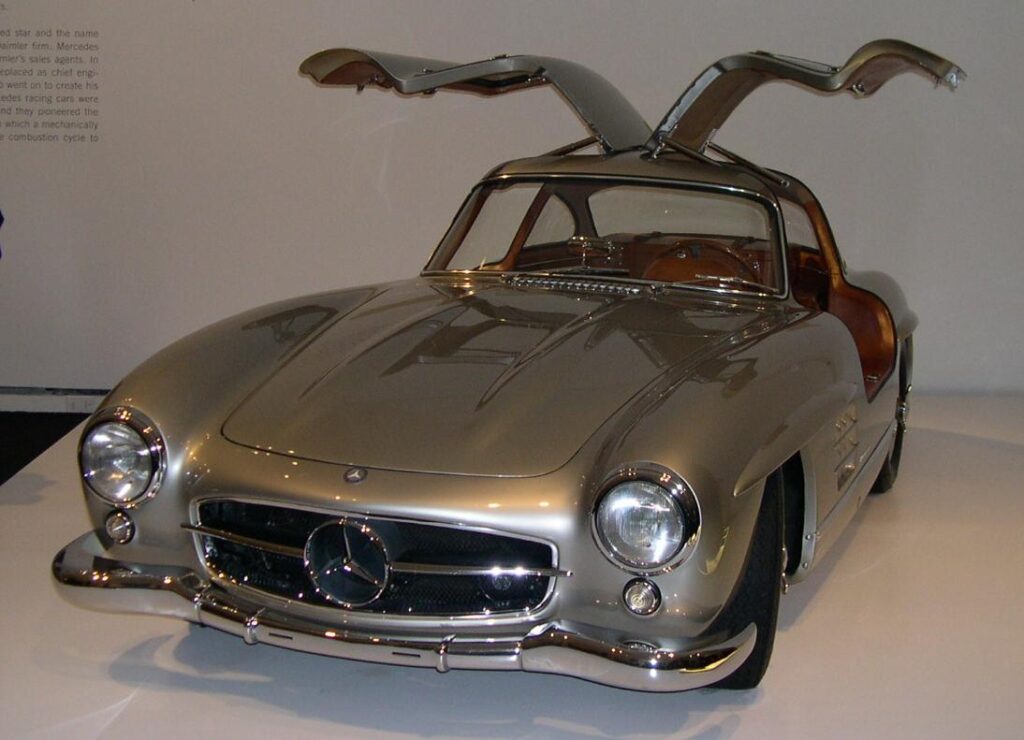
9. **Mercedes-Benz 300SL Gullwing (1954-1963)**The Mercedes-Benz 300SL Gullwing is an icon of automotive design, immediately recognizable by its distinctive doors that ingeniously open upward, mimicking a bird’s wings. This revolutionary feature wasn’t merely a stylistic flourish; it was a practical solution necessitated by the car’s innovative tubular space-frame chassis, which made conventional doors impractical. This blend of form and function speaks volumes about the ingenuity behind its creation.
Beyond its unique design, the 300SL Gullwing was a technological marvel, standing as one of the fastest production cars of its time. Its direct fuel-injection system, a groundbreaking feature for a production car, contributed significantly to its impressive performance. This “advanced engineering” combined with its “striking looks” immediately established it as a true automotive icon upon its debut.
For decades, the Gullwing has been a cornerstone of any serious classic car collection, its value consistently high due to its rarity, historical significance, and groundbreaking features. Yet, its worth continues to climb, demonstrating an enduring appeal that transcends generations of collectors. It’s not just a car; it’s a testament to post-war German engineering and design excellence, an investment that continuously proves its mettle.
Car Model Information: 2025 Honda Civic Sport
Name: Mercedes-Benz 300 SL
Caption: 300 SL roadster and gullwinged coupé
Manufacturer: Mercedes-Benz
Production: Mercedes-Benz 300 SLR#Uhlenhaut Coupé
Assembly: Stuttgart
Designer: Friedrich Geiger
Class: Sports car,Grand tourer
BodyStyle: coupé,Roadster (automobile)
Platform: Coupé W198 I, Roadster W198 II
Related: Mercedes-Benz 190 SL
Layout: FR layout
Engine: 2996 cc
Abbr: off
Transmission: Manual transmission
Wheelbase: 2400 mm
Length: 4520 mm
Width: 1790 mm
Height: 1300 mm
Weight: 1500 kg
Predecessor: Mercedes-Benz W194
Successor: Mercedes-Benz W113
Doors: Gull-wing door
Categories: 1960s cars, 24 Hours of Le Mans race cars, All Wikipedia articles needing clarification, All Wikipedia articles written in American English, All articles with vague or ambiguous time
Summary: The Mercedes-Benz 300 SL (chassis code W 198) is a two-seat sports car that was produced by Mercedes-Benz from 1954 to 1957 as a gullwinged coupé and from 1957 to 1963 as a roadster. The 300 SL traces its origins to the company’s 1952 racing car, the W194, and was equipped with a mechanical direct fuel-injection system that increased the power output of its three-liter overhead camshaft straight-six engine.
The 300 SL was capable of reaching 260 km/h (162 mph), earning it a reputation as a sports car racing champion and making it the fastest production car of its time. The car’s iconic gullwing doors and innovative lightweight tubular-frame construction were groundbreaking.
The designation “SL” is an abbreviation of the German term super-leicht, meaning “super-light”, a reference to the car’s racing-bred lightweight construction. The 300 SL was introduced to the American market at the suggestion of Max Hoffman, Mercedes-Benz’s United States importer at the time, who recognized the potential demand for a high-performance sports car among American buyers. The Mercedes-Benz 300 SL remains a highly sought-after classic car and is celebrated for its performance, design, and technological advancements.
Get more information about: Mercedes-Benz 300 SL
Buying a high-performing used car >>>
Brand: Mercedes-Benz Model: 300SL Gullwing
Price: $26,923 Mileage: 1,460 mi.
Read more about: Strategic Investments: The Classic Cars Skyrocketing in Value That Savvy Collectors Are Watching

10. **Lamborghini Miura (1966-1973)**The Lamborghini Miura is often credited with fundamentally reshaping the automotive landscape, ushering in the era of the modern supercar. Its radical mid-engine layout, a configuration previously reserved for racing cars, redefined performance car design. This groundbreaking engineering, coupled with its “stunning design” from Marcello Gandini at Bertone, created a vehicle that was utterly breathtaking and instantly iconic.
The Lamborghini Miura is often credited with fundamentally reshaping the automotive landscape, ushering in the era of the modern supercar. Its radical mid-engine layout, a configuration previously reserved for racing cars, redefined performance car design. This groundbreaking engineering, coupled with its “stunning design” from Marcello Gandini at Bertone, created a vehicle that was utterly breathtaking and instantly iconic.
Upon its unveiling, the Miura set “new standards” for high-performance cars, not just in terms of speed and power, but also in its visual drama and exotic appeal. It was a bold statement, confirming Ferruccio Lamborghini’s ambition to create cars that rivaled, and perhaps even surpassed, Ferrari. The Miura wasn’t just fast; it was beautiful, provocative, and revolutionary, captivating enthusiasts worldwide.
As a direct result of its “groundbreaking engineering” and breathtaking looks, the Lamborghini Miura has remained “highly sought after” by collectors since its inception. In recent years, its “value has increased dramatically,” solidifying its position as one of the most desirable and historically significant classic cars. It represents the genesis of the supercar genre, a legacy that continues to command awe and significant investment.
Read more about: Strategic Investments: The Classic Cars Skyrocketing in Value That Savvy Collectors Are Watching

11. **Ford GT40 (1964-1969)**The Ford GT40 embodies one of the most compelling stories in motorsport history: an audacious mission to beat Ferrari at the grueling 24 Hours of Le Mans. Developed in a transatlantic effort, this purpose-built racing machine was designed with one goal in mind: endurance victory. Its low-slung, aerodynamic profile and powerful American V8 engine were a direct challenge to the European dominance in sports car racing.
The Ford GT40 embodies one of the most compelling stories in motorsport history: an audacious mission to beat Ferrari at the grueling 24 Hours of Le Mans. Developed in a transatlantic effort, this purpose-built racing machine was designed with one goal in mind: endurance victory. Its low-slung, aerodynamic profile and powerful American V8 engine were a direct challenge to the European dominance in sports car racing.
And succeed it did, spectacularly so. The GT40 famously won the Le Mans race “four years in a row,” from 1966 to 1969, an unprecedented feat that etched its name into the annals of racing legend. These victories were not just triumphs for Ford; they represented a “crucial moment in motorsport history,” showcasing American engineering prowess on the international stage. Each win amplified its legend and desirability.
Today, original examples of the Ford GT40 are among the most revered and valuable classic cars. Their unparalleled “racing pedigree” and extremely “limited numbers” have caused their “values to soar,” with well-preserved or race-historied original examples now “worth millions.” Owning a GT40 is owning a piece of a legendary rivalry, a testament to speed, innovation, and an unyielding will to win.
Car Model Information: 1966 Ford GT40
Name: Ford GT40
Caption: Ford GT40 Mk.I in JWA Gulf Oil racing colors
Manufacturer: Ford Advanced Vehicles,John Wyer,Kar Kraft,Holman-Moody,Shelby American
Production: 1964–1969
Assembly: Slough,Los Angeles
Designer: Ron Bradshaw
Class: Group 4 (racing),Group 5 (racing),Group 6 (racing)
BodyStyle: coupé
Layout: MR layout
Engine: Cubic inch,289 CID (4737 cc) V-8,302 CID (4942 cc) V-8,427 CID (6997 cc) V-8
Transmission: Manual transmission
Wheelbase: 95 in
Abbr: on
Length: 160 in
Width: 70 in
Height: 40.5 in
Weight: convert
Successor: Ford P68
Sp: uk
Categories: 24 Hours of Le Mans race cars, All Wikipedia articles needing clarification, All Wikipedia articles written in British English, All articles needing additional references, All articles that may contain original research
Summary: The Ford GT40 is a high-performance mid-engined racing car originally designed and built for and by the Ford Motor Company to compete in 1960s European endurance racing and the World Sportscar Championship. Its specific impetus was to beat Scuderia Ferrari, which had won the prestigious 24 Hours of Le Mans race for six years running from 1960 to 1965. As rules of the time required that GT cars were built in dozens and sold, around 100 cars in total have been made, mostly as 289 cu in (4.7 L) V8-powered Mk Is, of which at least 50 were made in 1965, which allowed FIA-homologation as Group-4-Sportscar for 1966 until 1971. This gave the old MK.I car of Gulf-Wyer the chance to enter and win Le Mans in 1968 and 1969 after prototypes had been limited to 3 litre, with the performance of the Ford 7-litre-V8 in the factory 1966 Mk.II and 1967 Mk.IV prototypes causing this rule change, which also banned the 4-litre V12 Ferrari 330P4 and others after 1967. The Mk.III designation was used for some road-legal cars.
The Ford GT40 debuted in 1964, and improvements in 1965 led to Ford winning World Championships categories from 1966 to 1968. The first Le Mans win came in 1966 with three 427 cu in (7.0 L) powered Mk.II prototypes crossing the finish line together, the second in 1967 with the same engine now in quite different US-built Mk.IV prototype chassis similar to the “J-car” mule. In order to lower ever-higher race top speeds, a rule change from 1968 onwards limited prototypes to 3.0 litre Formula 1 engines; the sportscar “loophole”, however, allowed the private JW “Gulf Oil” team to win at Le Mans in 1968 and 1969 running a Mk.I with a 5.0 litre engine.
The GT40 effort began in Britain in the early 1960s when Ford Advanced Vehicles began to build the Mk I, based upon the British Lola Mk6, in Slough, UK. After disappointing race results, the engineering team was moved in 1964 to Dearborn, Michigan, US, to design and build cars by its advanced developer, Kar Kraft. All chassis versions were powered by a series of American-built Ford V8 OHV engines modified for racing.
In the 1966 Le Mans, the GT40 Mk II car broke Ferrari’s winning streak, making Ford the first American manufacturer to win a major European race since Jimmy Murphy’s Duesenberg in the 1921 French Grand Prix. In the 1967 Le Mans, the GT40 Mk IV car became the only car developed and assembled entirely (both chassis and engine) in the United States to achieve the overall win at Le Mans.
Get more information about: Ford GT40
Buying a high-performing used car >>>
Brand: Ford Model: GT40
Price: $110,000 Mileage: 13,350 mi.
Read more about: Strategic Investments: The Classic Cars Skyrocketing in Value That Savvy Collectors Are Watching
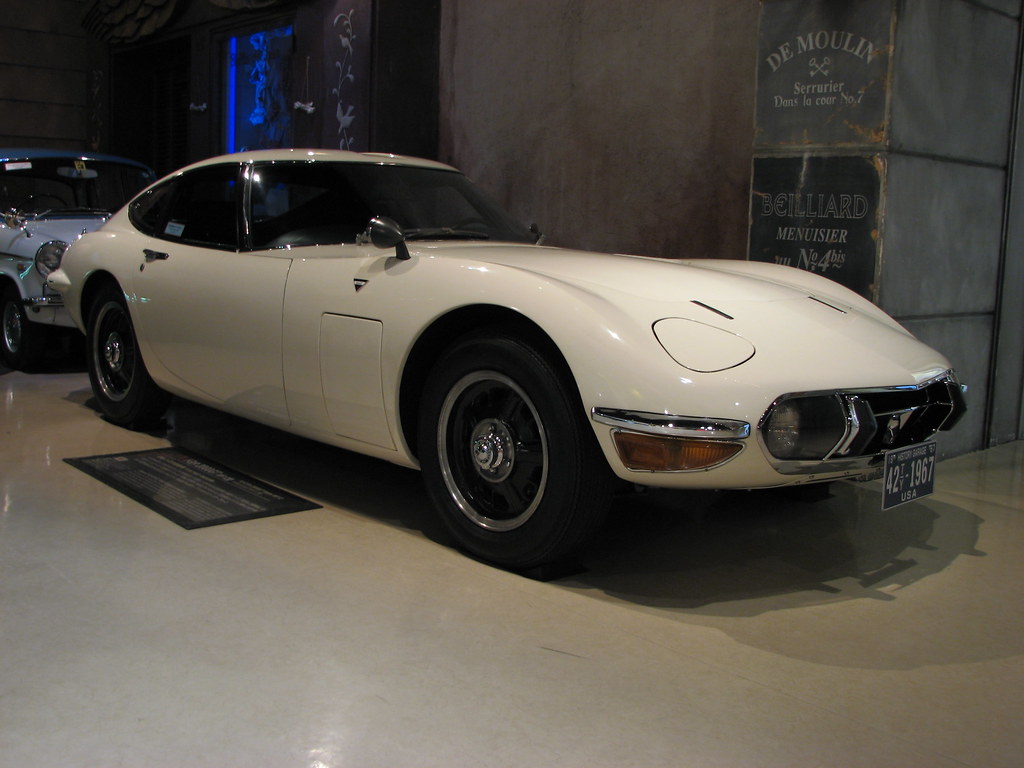
12. **Toyota 2000GT (1967-1970)**The Toyota 2000GT is widely celebrated as “Japan’s first supercar,” a masterpiece that shattered preconceived notions about Japanese automotive manufacturing. Prior to its arrival, Japan was primarily known for producing reliable, economical cars. The 2000GT, however, showcased that Japan could indeed create “world-class performance vehicles” with breathtaking design and sophisticated engineering, challenging European dominance in the sports car market.
The Toyota 2000GT is widely celebrated as “Japan’s first supercar,” a masterpiece that shattered preconceived notions about Japanese automotive manufacturing. Prior to its arrival, Japan was primarily known for producing reliable, economical cars. The 2000GT, however, showcased that Japan could indeed create “world-class performance vehicles” with breathtaking design and sophisticated engineering, challenging European dominance in the sports car market.
Its exquisite “elegant design,” characterized by its long hood, fastback roofline, and pop-up headlights, was a collaboration with Yamaha, resulting in a car of stunning beauty and balance. This visual appeal was matched by its performance, featuring a Yamaha-tuned inline-six engine that provided respectable power and a sublime driving experience. The 2000GT was a revelation, proving Japanese craftsmanship could compete at the highest level.
One of the most significant factors contributing to the 2000GT’s immense value today is its extreme “rarity.” A mere “351 were ever made,” making it an exceptionally scarce commodity for collectors worldwide. This combination of “elegant design and rarity” has caused its “prices to skyrocket in recent years,” transforming it into one of the most sought-after and valuable classic Japanese sports cars, a true symbol of automotive progress.
Read more about: Strategic Investments: The Classic Cars Skyrocketing in Value That Savvy Collectors Are Watching

13. **Jaguar E-Type (1961-1975)**The Jaguar E-Type, often hailed as “one of the most beautiful cars ever made” by none other than Enzo Ferrari himself, is a quintessential British sports car that perfectly blends aesthetic grace with thrilling performance. Its long, sensual lines, curvaceous bodywork, and elegant proportions captivated the world upon its debut, immediately establishing it as a design icon. It was a vehicle that looked fast even when standing still.
The Jaguar E-Type, often hailed as “one of the most beautiful cars ever made” by none other than Enzo Ferrari himself, is a quintessential British sports car that perfectly blends aesthetic grace with thrilling performance. Its long, sensual lines, curvaceous bodywork, and elegant proportions captivated the world upon its debut, immediately establishing it as a design icon. It was a vehicle that looked fast even when standing still.
Beyond its “stunning looks,” the E-Type offered “impressive performance for its time,” featuring sophisticated independent suspension and powerful inline-six engines that provided an exhilarating driving experience. It was a car that could genuinely be driven with enthusiasm on twisting roads, while also turning heads wherever it went. This blend of beauty and capability has cemented its place in automotive lore.
Today, these British sports cars remain “highly sought after by collectors worldwide.” Their “timeless design” ensures their enduring appeal, while Jaguar’s rich “racing heritage” adds a layer of prestige and provenance. The E-Type’s “rising value” is a clear indicator of its status as a cherished classic, consistently attracting significant investment for well-preserved examples that represent automotive artistry at its finest.
Car Model Information: 1974 Jaguar E-Type Series III Numbers Matching! 11k Original Miles! Concourse Quality!
Sp: uk
Name: Jaguar E-Type
Caption: 1961 E-Type Series 1 3.8-Litre, the first production model of this open two-seater
Aka: Jaguar XK-E (North America),Jaguar V-12
Manufacturer: Jaguar Cars
Production: 1961–1974
Class: Sports car
Predecessor: Jaguar XK150
Related: Jaguar D-Type,Jaguar XJ13
Successor: Jaguar XJS
Layout: FMR layout
Assembly: Coventry,England
Designer: Malcolm Sayer
Categories: 1970s cars, 2+2 coupés, All Wikipedia articles written in British English, All articles with dead external links, All articles with specifically marked weasel-worded phrases
Summary: The Jaguar E-Type, or the Jaguar XK-E for the North American market, is a British front mid-engined sports car that was manufactured by Jaguar Cars Ltd from 1961 to 1974. Its sleek appearance, advanced technologies, high performance, and competitive pricing established it as an icon. The E-Type’s claimed 150 miles per hour (240 km/h) top speed, sub-7-second 0 to 60 mph (97 km/h) acceleration, largely unitary body construction, front and rear independent suspension with disc brakes, mounted inboard at the rear, and rack-and-pinion steering spurred industry-wide changes.
The E-Type was based on Jaguar’s D-Type racing car, which had won the 24 Hours of Le Mans for three consecutive years beginning in 1955.
The E-Type employed what was, for the early 1960s, a novel design principle, with a front subframe carrying the engine, front suspension and front bodywork bolted directly to the body tub. No ladder frame chassis, as was common at the time, was needed and as such the first cars weighed only 1,315 kg (2,899 lb).
It is rumored that, on its debut on 15 March 1961, Enzo Ferrari called it “the most beautiful car ever made”, but this statement is not fully confirmed. In 2004, Sports Car International magazine placed the E-Type at number one on their list of Top Sports Cars of the 1960s. In March 2008, the Jaguar E-Type ranked first in The Daily Telegraph’s online list of the world’s “100 most beautiful cars” of all time.
Get more information about: Jaguar E-Type
Buying a high-performing used car >>>
Brand: Jaguar Model: E-Type
Price: $110,800 Mileage: 11,946 mi.
Read more about: Strategic Investments: The Classic Cars Skyrocketing in Value That Savvy Collectors Are Watching

14. **Porsche 911 (1963-1989)**The Porsche 911 is, without question, a “timeless sports car,” an automotive legend that has maintained its fundamental design philosophy for decades, evolving rather than revolutionizing with each generation. The early models, specifically those from 1963 to 1989, are “especially prized for their pure, uncluttered styling,” embodying the essence of Ferdinand Porsche’s original vision for a lightweight, rear-engined sports coupe.
The Porsche 911 is, without question, a “timeless sports car,” an automotive legend that has maintained its fundamental design philosophy for decades, evolving rather than revolutionizing with each generation. The early models, specifically those from 1963 to 1989, are “especially prized for their pure, uncluttered styling,” embodying the essence of Ferdinand Porsche’s original vision for a lightweight, rear-engined sports coupe.
These classic 911s are renowned for their “excellent handling” – a characteristic often attributed to their unique “rear-engine layout” which, while demanding, rewards skilled drivers with an unparalleled connection to the road. The distinct flat-six engine note and visceral driving dynamics create an experience that is both engaging and deeply satisfying. This mechanical purity is a significant draw for enthusiasts.
Their increasing desirability and “rising value reflect their status as one of the most respected sports cars ever” manufactured. The consistent demand for early 911s, especially well-maintained and original examples, highlights their robust investment potential. Owning a classic 911 is not just about possessing a piece of automotive history; it’s about experiencing a driving philosophy that has stood the test of time, becoming more valuable with each passing year.
Car Model Information: 2021 Porsche 911
Name: Porsche 911
Caption: The 1 millionth 911 produced on display at Volkswagen Group Forum, Berlin
Designer: Ferdinand Alexander Porsche
Manufacturer: Porsche
Production: September 1964 – present
Assembly: Stuttgart,Baden-Württemberg
Class: Sports car
BodyStyle: unbulleted list
Related: unbulleted list
Layout: Rear-engine design,rear-wheel drive
Predecessor: Porsche 356
Categories: 1970s cars, 1980s cars, 1990s cars, 2+2 coupés, 2000s cars
Summary: The Porsche 911 model series (pronounced Nine Eleven or in German: Neunhundertelf, or colloquially Neunelfer) is a family of two-door, high performance rear-engine sports cars, introduced in September 1964 by Porsche of Stuttgart, Germany, and now in its eighth generation. All 911s have a rear-mounted flat-six engine, and usually 2+2 seating, except for special 2-seater variants. Originally, 911s had air-cooled engines, and torsion bar suspension, but the 911 has been continuously enhanced, and evolved across generations. Though the 911 core concept has remained largely unchanged, water-cooled engines were introduced with the 996 series in 1998, and front and rear suspension have been replaced by Porsche-specific MacPherson suspension up front, and independent multi-link rear suspension.
The 911 has been raced extensively by private and factory teams, in a variety of classes. It is among the most successful competition cars. In the mid-1970s, the naturally aspirated 911 Carrera RSR won world championship races including Targa Florio and the 24 Hours of Daytona. The 911-derived 935 turbo also won the 24 Hours of Le Mans in 1979. Porsche won the World Championship for Makes in 1976, 1977, 1978, and 1979 with 911-derived models.
In a 1999 poll to determine the Car of the Century, the 911 ranked fifth — one of two in the top five that had remained continuously in production (the original Beetle remained in production until 2003). The one millionth example was manufactured in May 2017 and is in the company’s permanent collection.
Get more information about: Porsche 911
Buying a high-performing used car >>>
Brand: Porsche Model: 911
Price: $126,995 Mileage: 8,629 mi.
Read more about: Strategic Investments: The Classic Cars Skyrocketing in Value That Savvy Collectors Are Watching
As we’ve explored these 14 extraordinary classic cars, it becomes abundantly clear that their soaring values are not merely a fleeting trend but a reflection of their profound impact on automotive history, their inherent rarity, and the sheer passion they ignite in collectors. These machines are more than just vehicles; they are rolling works of art, engineering marvels, and tangible pieces of our collective past that continue to appreciate, offering a unique blend of passion and astute financial opportunity. Whether driven, displayed, or simply admired, these classics promise an enriching experience and a robust return on investment for those savvy enough to acquire them. The roar of a classic engine, the sleek lines of an iconic design, and the story etched into every curve – these are the true drivers behind the incredible ascent of the classic car market, transforming once-ordinary vehicles into extraordinary assets.

